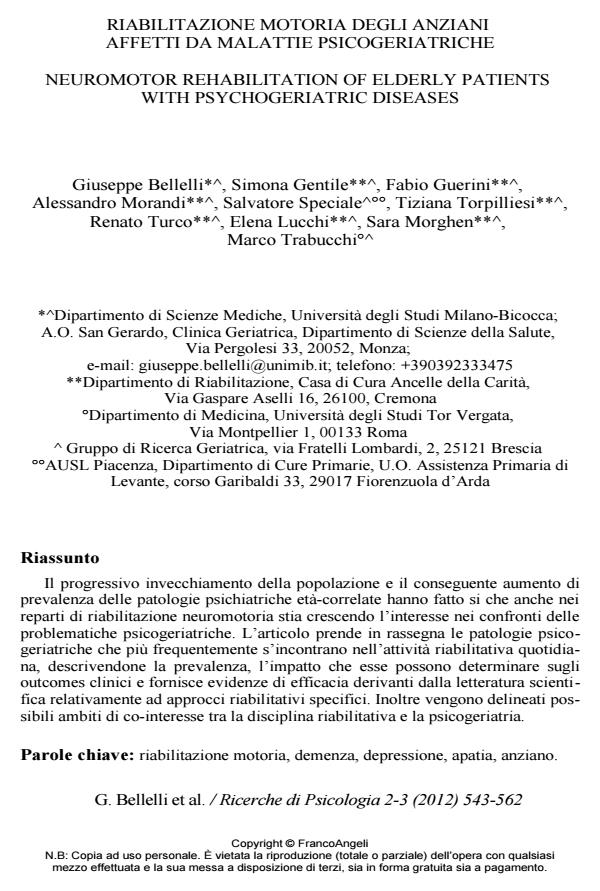Riabilitazione motoria degli anziani affetti da malattie psicogeriatriche
Titolo Rivista RICERCHE DI PSICOLOGIA
Autori/Curatori Giuseppe Bellelli, Simona Gentile, Fabio Guerini, Alessandro Morandi, Salvatore Speciale, Tiziana Torpilliesi, Renato Turco, Elena Lucchi, Sara Morghen, Marco Trabucchi
Anno di pubblicazione 2013 Fascicolo 2012/2-3
Lingua Italiano Numero pagine 20 P. 543-562 Dimensione file 219 KB
DOI 10.3280/RIP2012-002025
Il DOI è il codice a barre della proprietà intellettuale: per saperne di più
clicca qui
Qui sotto puoi vedere in anteprima la prima pagina di questo articolo.
Se questo articolo ti interessa, lo puoi acquistare (e scaricare in formato pdf) seguendo le facili indicazioni per acquistare il download credit. Acquista Download Credits per scaricare questo Articolo in formato PDF

FrancoAngeli è membro della Publishers International Linking Association, Inc (PILA)associazione indipendente e non profit per facilitare (attraverso i servizi tecnologici implementati da CrossRef.org) l’accesso degli studiosi ai contenuti digitali nelle pubblicazioni professionali e scientifiche
Il progressivo invecchiamento della popolazione e il conseguente aumento di prevalenza delle patologie psichiatriche eta-correlate hanno fatto si che anche nei reparti di riabilitazione neuromotoria stia crescendo l’interesse nei confronti delle problematiche psicogeriatriche. L’articolo prende in rassegna le patologie psicogeriatriche che piu frequentemente s’incontrano nell’attivita riabilitativa quotidiana, descrivendone la prevalenza, l’impatto che esse possono determinare sugli outcomes clinici e fornisce evidenze di efficacia derivanti dalla letteratura scientifica relativamente ad approcci riabilitativi specifici. Inoltre vengono delineati possibili ambiti di co-interesse tra la disciplina riabilitativa e la psicogeriatria.
Parole chiave:Riabilitazione motoria, demenza, depressione, apatia, anziano.
Giuseppe Bellelli, Simona Gentile, Fabio Guerini, Alessandro Morandi, Salvatore Speciale, Tiziana Torpilliesi, Renato Turco, Elena Lucchi, Sara Morghen, Marco Trabucchi, Riabilitazione motoria degli anziani affetti da malattie psicogeriatriche in "RICERCHE DI PSICOLOGIA " 2-3/2012, pp 543-562, DOI: 10.3280/RIP2012-002025